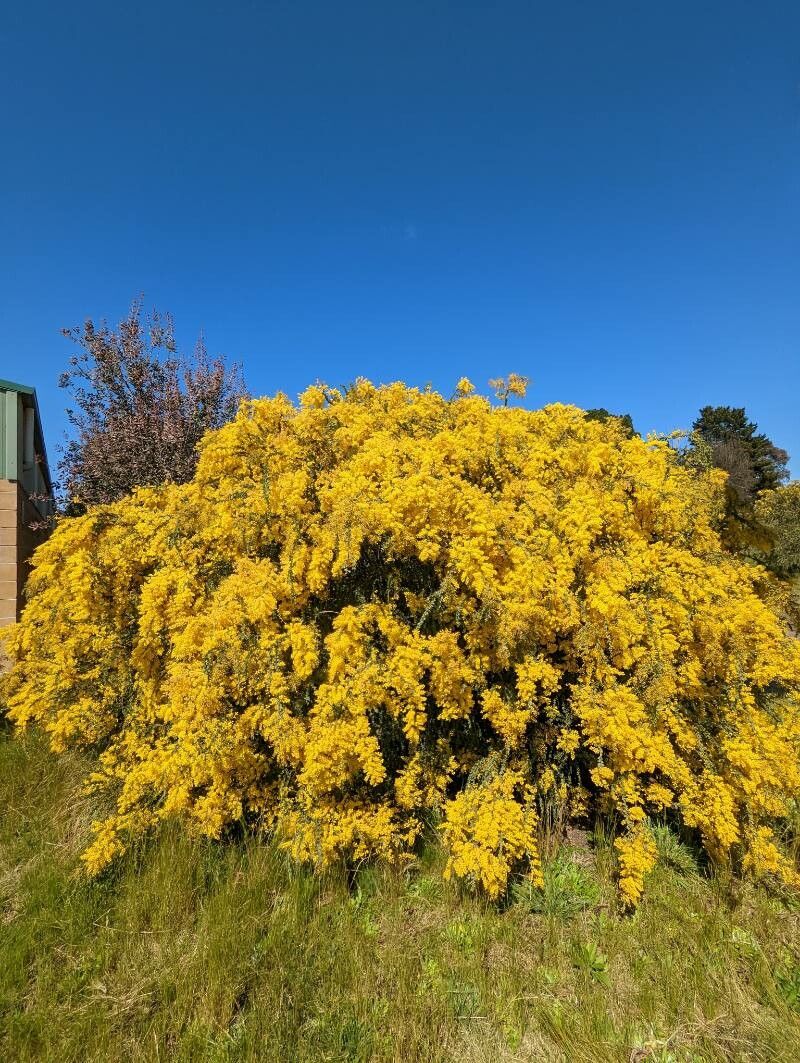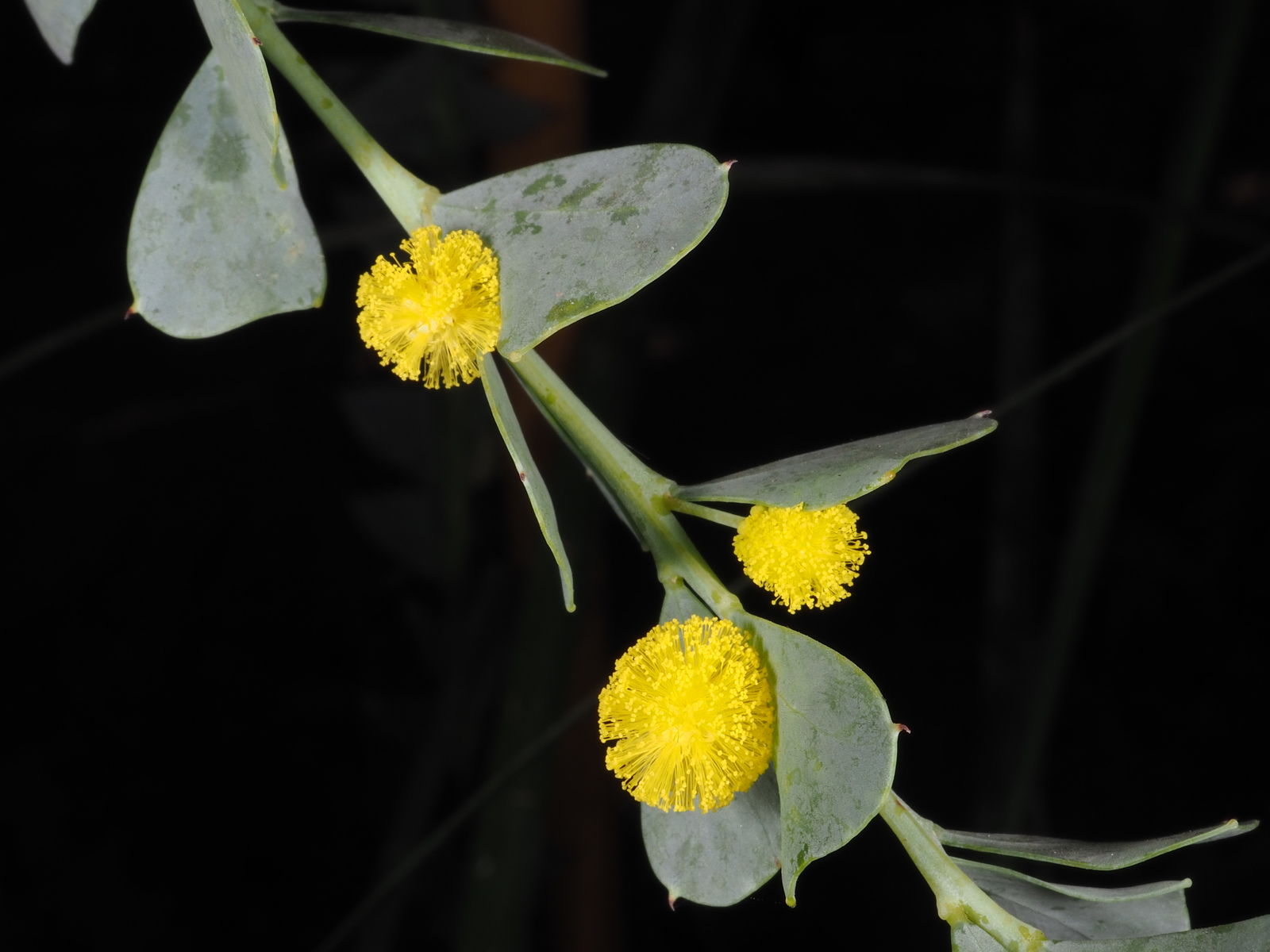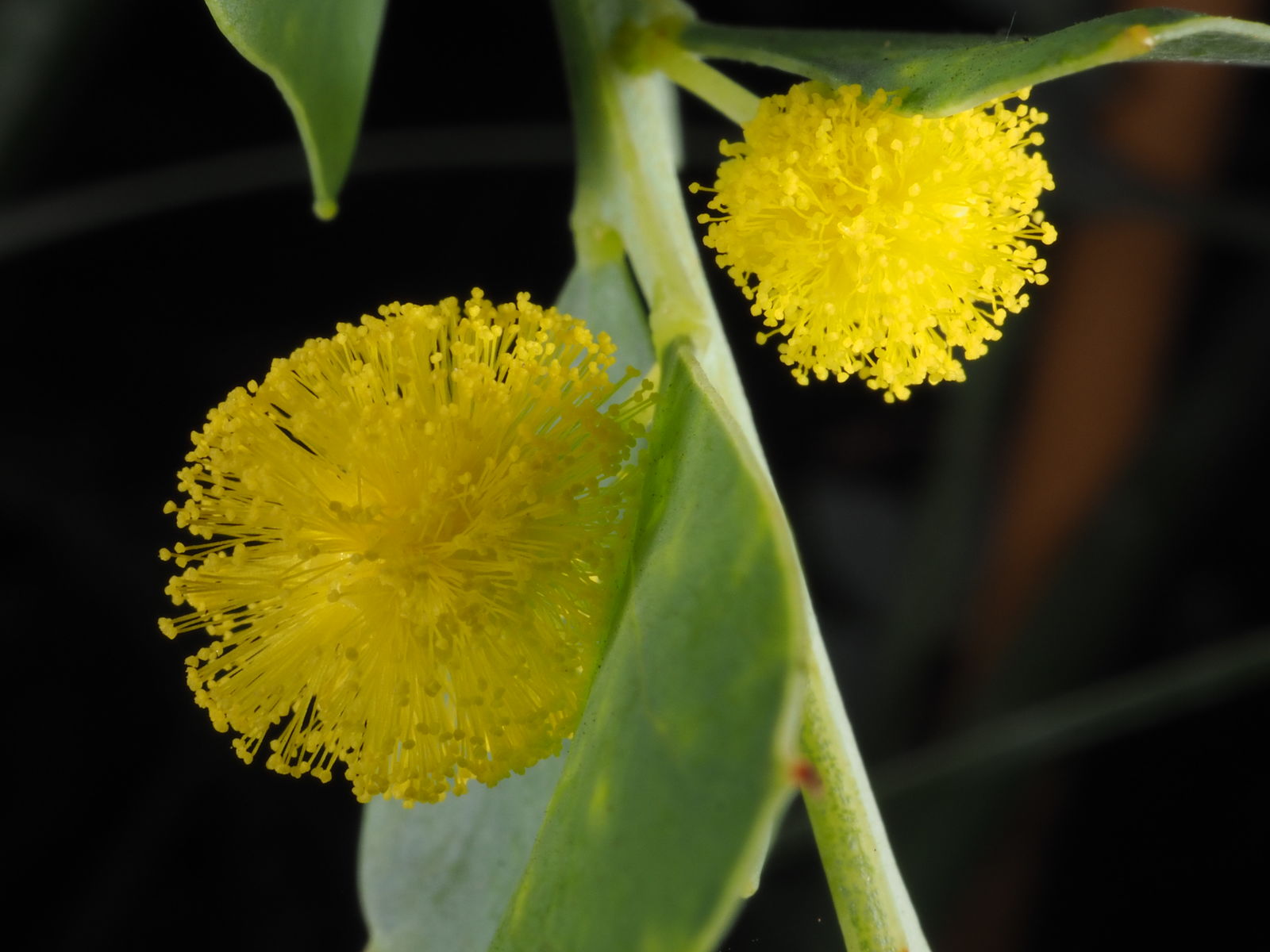Gulf Muhly
acacia cultriformis
Also known as: ["Dogtooth Wattle","Knife-leaf Wattle"]
Overview
A small, spreading shrub with distinctive triangular leaflets and bright yellow flowers in spring.
Benefits & Perks
["drought tolerant","wildlife attractant (bees, butterflies, birds)","low maintenance"]
Botanical Classification
| Phylum: | Magnoliophyta |
| Class: | Magnoliopsida |
| Order: | Fabales |
| Family: | Fabaceae |
| Genus: | Acacia |
| Botanical Name: | Acacia cultriformis |
Plant Characteristics
Basic Information
- Category: Shrubs
- Suitable Location: outdoor garden in a sunny, open position
- Suitable For:
- Is Weed: No
- Allergenicity: low
Environmental Needs
- Climate: {"temperatureRange":"5–40°C"}
- Hardiness: {"zones":"9–11"}
- Misting: rarely required, only if ambient humidity is very low
- Drainage: Fast-draining to prevent root rot.
- Soil Type: Well-draining, sandy loam with some organic matter. Cactus or succulent mix is ideal.
Maintenance Level
- Maintenance Level: low
- Toughness Level: high
- Pruning Frequency: Annually in late winter or early spring before new growth begins.
- Pruning Intensity: Moderate to heavy, depending on desired shape and size.
Care Details
Ideal Sunlight Coverage:
Full sun (6–8 hours of direct sunlight daily). Tolerates partial shade but may become leggy with insufficient light.
Sunlight Tolerance Tips:
Acclimate new plants gradually to direct sun to prevent scorching. Indoors, place near a south-facing window. Outdoors, ensure unobstructed sunlight.
Care Requirements
Care Difficulty
easymoderate
Sunlight
full sun
Rotate plant for even growth; use sheer curtains to filter intense midday sun; avoid shaded spots.
Watering
every 7–10 days during active growth, less frequently in winter
Water thoroughly until runoff occurs; allow soil to dry between waterings; avoid overwatering, especially in winter.
Soil
well-drained, sandy or loamy soil
pH: Slightly acidic to neutral (pH 6.0–7.0).
Avoid heavy clay soils; ensure soil dries between waterings; amend with grit if drainage is poor.
Temperature
Thrives in warm conditions (65–85°F / 18–29°C). Tolerates mild frosts but prefers temperatures above 50°F (10°C).
Protect from frost; ensure good air circulation in heat; adjust watering with temperature changes.
Fertilizing
every 2–3 months during spring and summer
Fertilize only during active growth; avoid over-fertilizing, which can harm roots; flush soil occasionally to prevent salt buildup.
Propagation
Methods
Stem cuttings or seed. Stem cuttings are more reliable for home growers.
Step-by-Step Propagation Guide
- Take 4–6 inch cuttings.
- Remove lower leaves.
- Apply rooting hormone.
- Plant in medium.
- Maintain humidity.
- Wait for roots.
Best Time: Spring or early summer when the plant is actively growing.
Environment
Warm (70–75°F / 21–24°C), high humidity (70–80%), and bright indirect light.
Medium
Well-draining mix of perlite and peat moss or cactus mix.
Hormone
Recommended to use rooting hormone for faster and more reliable rooting.
Timeline
Roots may develop in 4–8 weeks; establish in new pot within 3–6 months.
Tools Needed
Pruning shears, rooting hormone, small pots, misting spray bottle, plastic bags (for humidity).
Quick Tips
Use healthy, non-flowering stems; keep soil consistently moist but not waterlogged; provide bottom heat if possible.
Pruning & Repotting
Pruning Guide
Method
Selective thinning, heading back, and removal of crossing branches.
Pruning Plan
Shape the plant, encourage bushier growth, and remove dead or diseased wood. Prune to maintain desired size and form.
Tools
Pruning shears, loppers (for larger branches), gloves.
Checklist
Sterilize tools; prune before flowering if controlling size; remove dead/diseased wood; shape evenly.
Repotting Guide
Best Season
Early spring before active growth starts.
Pot Size
Move to a pot 1–2 inches larger in diameter than the current one.
Method
Remove plant gently; trim rootbound roots; replace with fresh, well-draining soil; ensure drainage holes are clear.
Suggestions
Repot every 2–3 years or when roots fill the pot. Necessary to refresh soil and provide space for growth.
Checklist
Choose appropriate pot size; prepare fresh soil mix; handle roots carefully; water after repotting.
Advanced Care Tips
Watering Mastery
Watering Checklist
Check soil moisture before watering; water deeply; ensure drainage; adjust frequency by season.
How to Apply Water Properly
Water directly at the root zone, ensuring even saturation. Apply water slowly to allow absorption, and ensure excess drains away. Water in the morning to minimize evaporation and fungal risk.
Watering Schedule Tips
Water deeply once every 7–10 days during active growth in spring and summer; reduce frequency to every 2–3 weeks in fall and winter. Adjust based on rainfall and soil dryness.
Soil Improvement
Add perlite or coarse sand to improve drainage; incorporate compost for organic matter; ensure pots have drainage holes.
Temperature Stress Management
Signs of Temperature Issues
Chlorosis or leaf drop in cold stress; wilting or scorching in excessive heat.
Cold Stress
Growth slows or halts; leaves may yellow or drop; risk of root damage in prolonged freezing.
Solution: Move potted plants indoors or to a sheltered location; apply a thick layer of mulch for ground plants; avoid overwatering.
Hot Stress
Leaves may scorch, wilt, or drop; growth may slow due to excessive transpiration.
Solution: Provide partial shade during peak heat; increase watering frequency; use mulch to retain soil moisture.
Fertilizing Guide
Fertilizing Checklist
Use balanced fertilizer; apply in spring; dilute liquid fertilizers; avoid winter feeding.
Fertilizing Method
Use a balanced, slow-release fertilizer in spring. Dilute liquid fertilizer to half-strength if used monthly during growing season. Avoid fertilizing in winter.
Common Problems & Solutions
Toxicity Warning
Cats
Slightly ToxicCats may experience mild gastrointestinal symptoms if they ingest the seeds or pods of Acacia cultriformis. The effects are typically not severe but warrant monitoring.
⚠️ Symptoms:
🌿 Toxic Parts:
⚡ Toxic If:
if eaten
Dogs
Slightly ToxicIn dogs, ingestion of Acacia cultriformis seeds and pods can lead to mild gastrointestinal upset. The toxicity is generally not life-threatening but can cause discomfort.
⚠️ Symptoms:
🌿 Toxic Parts:
⚡ Toxic If:
if eaten
Humans
Slightly ToxicAcacia cultriformis contains compounds that can cause mild gastrointestinal distress when ingested in significant quantities. The seeds and pods are the primary toxic parts due to their higher concentration of these compounds.
⚠️ Symptoms:
🌿 Toxic Parts:
⚡ Toxic If:
if eaten
Frequently Asked Questions
Q: Is Acacia cultriformis toxic to pets?
A: It is mildly toxic to dogs and cats if ingested.
Q: How often should I water this plant?
A: Water sparingly, as it is drought tolerant and prefers well-drained soil.
Q: Does this plant attract wildlife?
A: Yes, it attracts bees, butterflies, and birds due to its nectar-rich flowers.
Quick Reference
| Family: | Fabaceae |
| Care: | easy |
| Light: | full sun |
| Water: | every 7–10 days during activ |
Get Expert Care Tips
Download the Plantious app for personalized care reminders and plant identification!
Google Play App Store








